
Below you will find a collection of fact sheets, content essays, and stories from our explorers on board hydrothermal vents and underwater volcanoes expeditions featured on the OceanExplorer.NOAA.gov website.
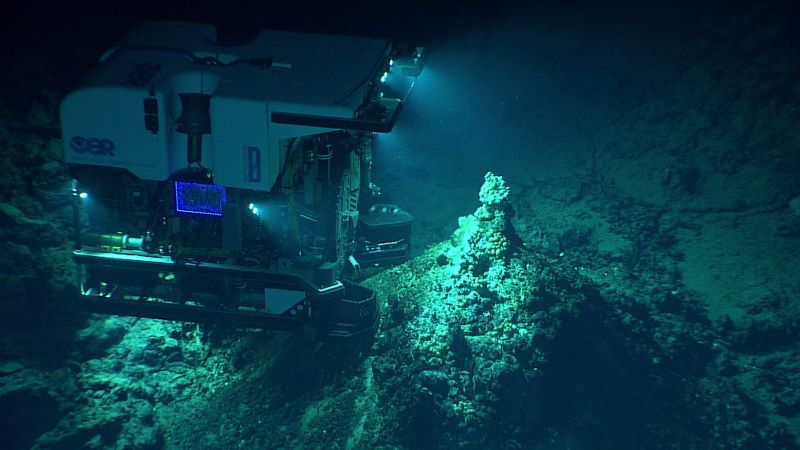
Fact Sheet: Hydrothermal vents are the result of sea water percolating down through fissures in the ocean crust near spreading centers or subduction zones.
Read more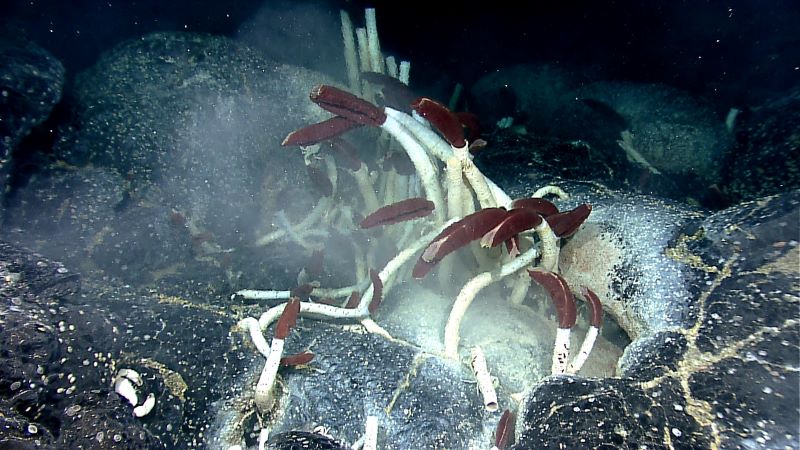
Fact Sheet: Photosynthesis is possible in any ecosystem that gets sufficient sunlight–on land, in shallow water, even inside and below clear ice. In the deep ocean, however, there is no light. Here, instead of sunlight being the primary form of energy, chemical energy is used in a process called chemosynthesis.
Read more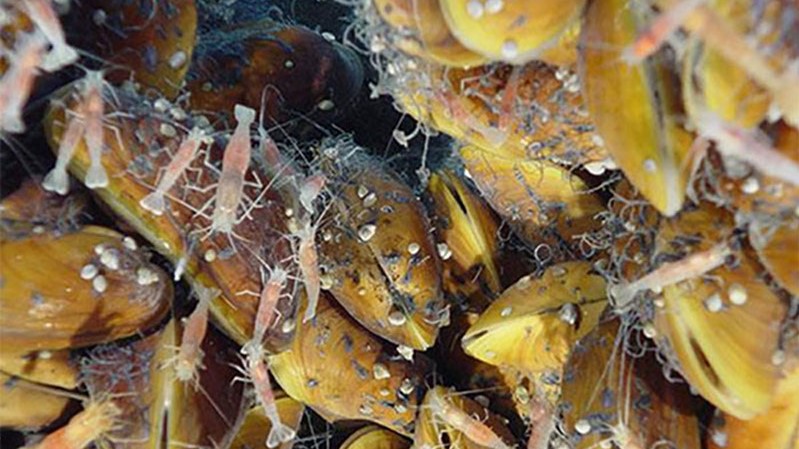
Exploration Note: Learn more about the diversity of organisms that are adapted to survive the extreme conditions of life on a hydrothermal vent.
Read more
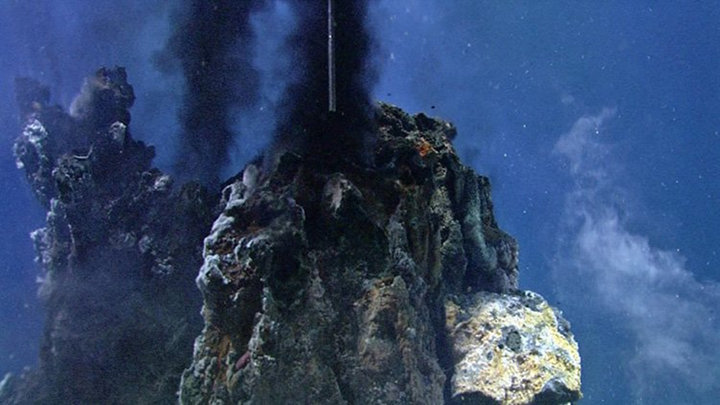
Ocean Exploration Fact. Even though most submarine volcanoes do not produce the spectacular eruption events of some of their land counterparts, undersea volcanic activity is a constant process that shapes the features of the ocean.
Read more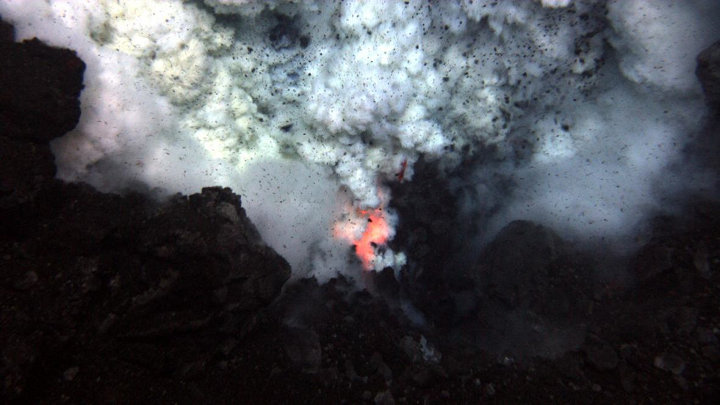
Ocean Exploration Fact. Did you know that most of the active volcanoes on Earth are located underwater, along the aptly named Ring of Fire in the Pacific Ocean?
Read more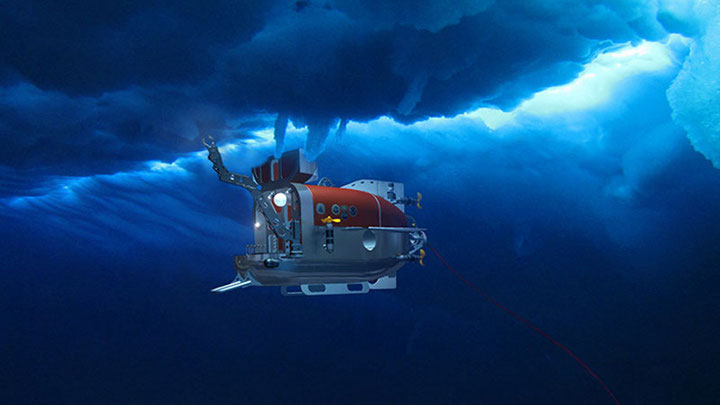
A team of oceanographers explore in detail for the first time a hydrothermal vent field in the Arctic Ocean. See and learn what they found here.
Read more
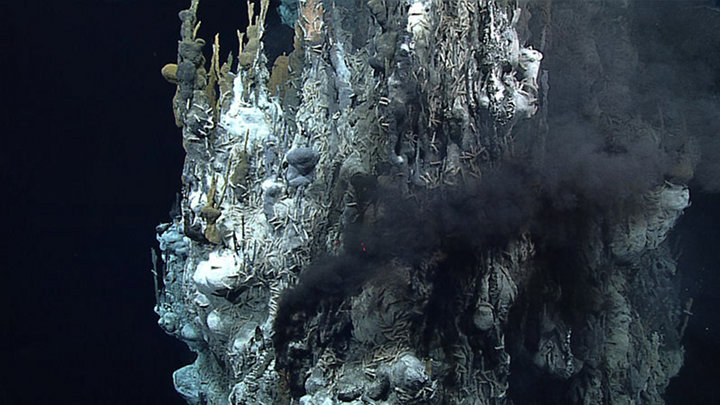
From the 2016 Deepwater Exploration of the Marianas expedition. Dives 9, 10, and 11 of this expedition were all made on the Mariana back-arc, a deep rift valley where seafloor spreading is occurring and volcanic eruptions provide the heat to create hydrothermal vents and their unique biological communities. The science team explored brand new underwater lava flows and searched for and found active hydrothermal vents, including a 30-meter-high active venting chimney!
Read more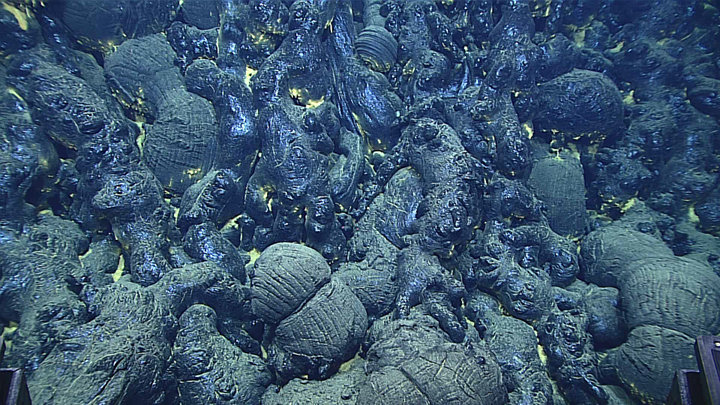
From the 2016 Deepwater Exploration of the Marianas expedition. During the first leg of this expedition, explorers discovered a new hydrothermal vent fields and new lava flows.
Read more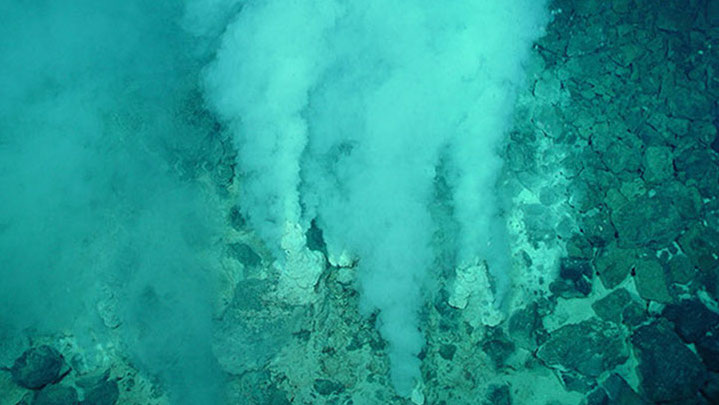
From the 2016 Deepwater Exploration of the Marianas expedition. While the Mariana Trench is amazingly cool, there are other equally awesome habitats within the Marianas Trench Marine National Monument, such as hydrothermal vents.
Read more
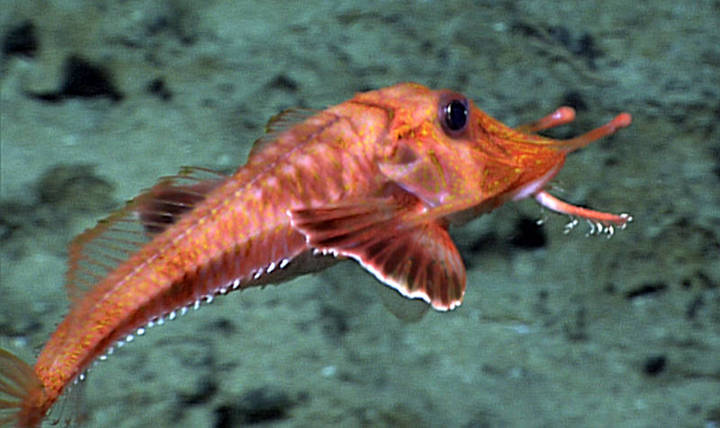
From the 2015 Hohonu Moana: Exploring Deep Waters off Hawaiʻi expedition. The fishes that we see on all but the shallowest Okeanos Explorer dives live in the habitats created by extinct volcanic lava flows – they are volcano fish. Some live near active volcanoes as well as on extinct features.
Read more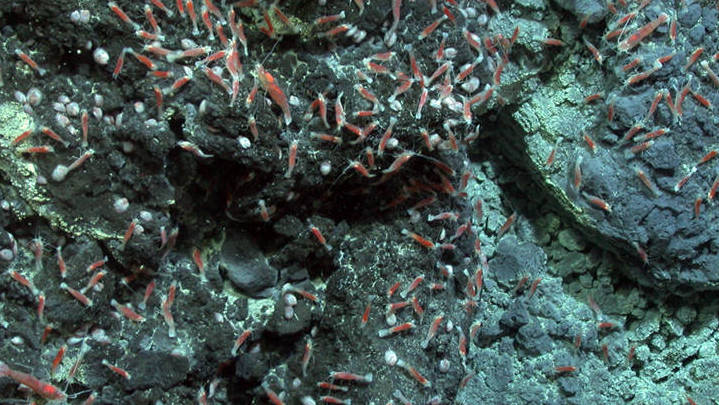
From the Submarine Ring of Fire 2014 - Ironman expedition. In few other places on Earth is animal nutrition as inextricably linked to microbes as it is at hydrothermal vents. Microbes have the ability to capture the chemical energy potential in hydrothermal vent fluids, thus growing without the need for sunlight. Vent fauna have evolved to take advantage of this abundant food source.
Read more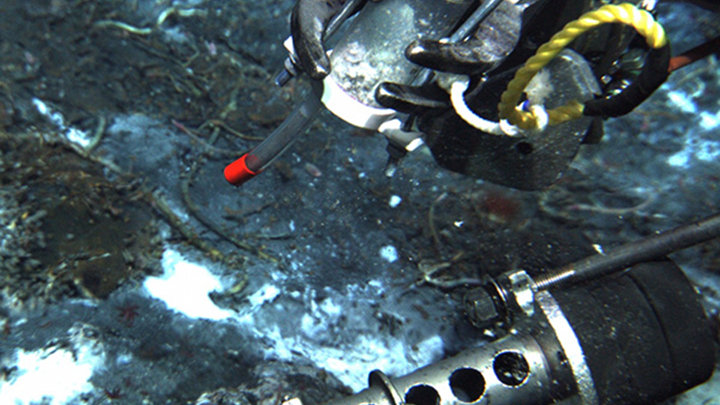
From the Submarine Ring of Fire 2012: NE Lau Basin expedition. Organisms at hydrothermal vents with unique forms of primary and secondary metabolism represent an untapped potential source of new types of natural products with new biological mechanisms of action.
Read more
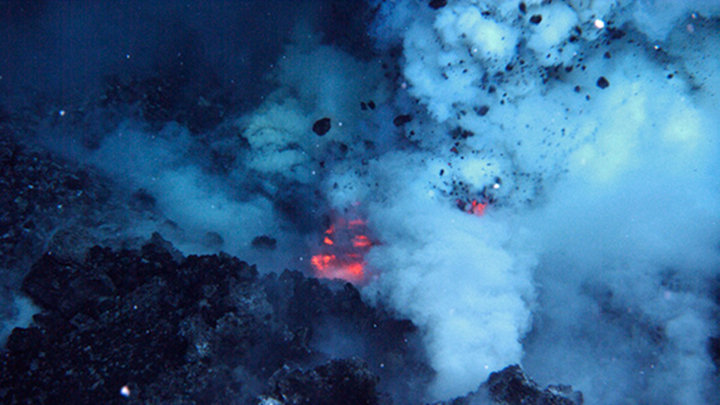
From the Submarine Ring of Fire 2012: NE Lau Basin expedition. This essay discusses the major forms of volcanism that occur along the Submarine Ring of Fire in the northeast Lau Basin.
Read more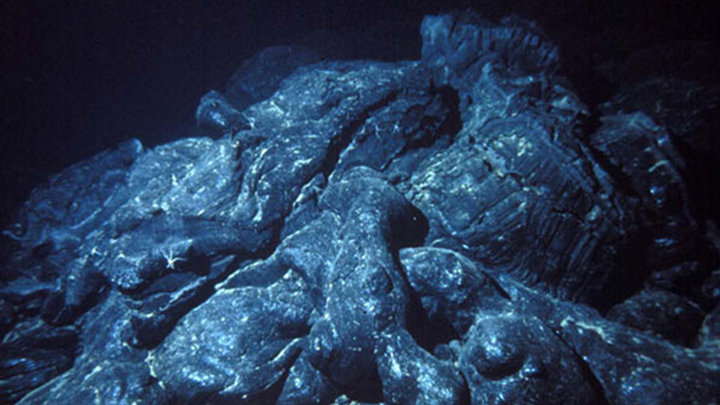
From the Submarine Ring of Fire 2006 expedition. Volcanic arcs can be on land or underwater, or can be a combination of islands and submarine volcanoes, like the Mariana Arc. The "Ring of Fire" is a circular arc of active volcanoes that surrounds the Pacific Ocean basin, mostly above subduction zones.
Read more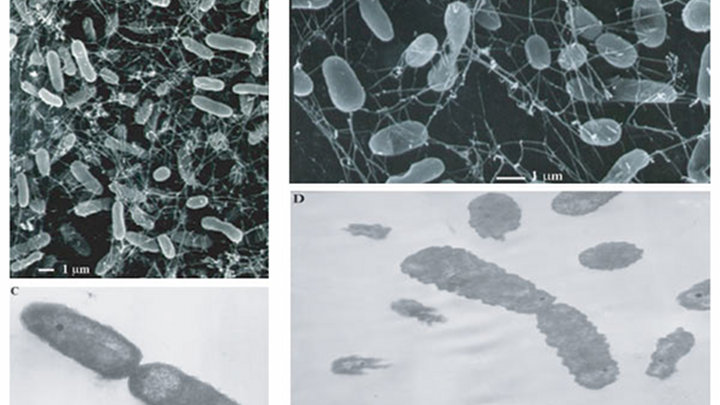
From the Submarine Ring of Fire 2006 expedition. Microbes have the ability to capture energy from a huge range of chemical processes, and many of the microbes at deep-sea hydrothermal vents do not need sunlight or oxygen to survive.
Read more
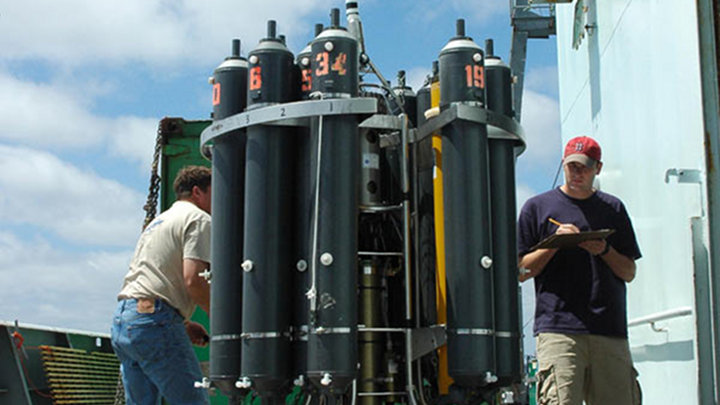
From the Submarine Ring of Fire 2006 expedition. The chance of successfully finding hydrothermal vent sites is greatly increased by searching first for the plumes emitted from the vents and not by searching for the vents themselves. Oceanographers rely on a basic tool: a conductivity-temperature-depth (CTD) package with optical and chemical sensors to locate vent sites.
Read more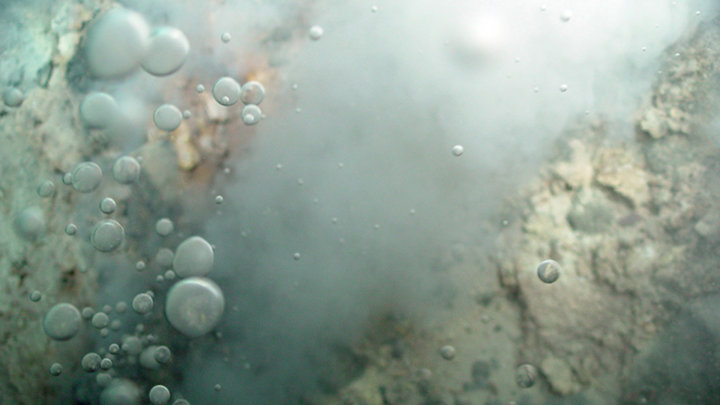
From the Submarine Ring of Fire 2004 - Mariana Arc expedition. Along these volcanic ridges lies a hidden, but important, cycle of water transport that plays a key role in maintaining the chemical composition of the oceans.
Read more
From the Submarine Ring of Fire 2003 - Mariana Arc expedition. The "Ring of Fire" is a circular arc of active volcanoes that surrounds the Pacific Ocean basin. Much is known about the volcanoes on land within the Ring of Fire (for example, in the Aleutians, the Cascades, the Andes, etc.), but comparatively little is known about the submarine volcanoes.
Read more
The above items are only a selection of the educational materials highlighting hydrothermal vents and underwater volcanoes on our website.
View More